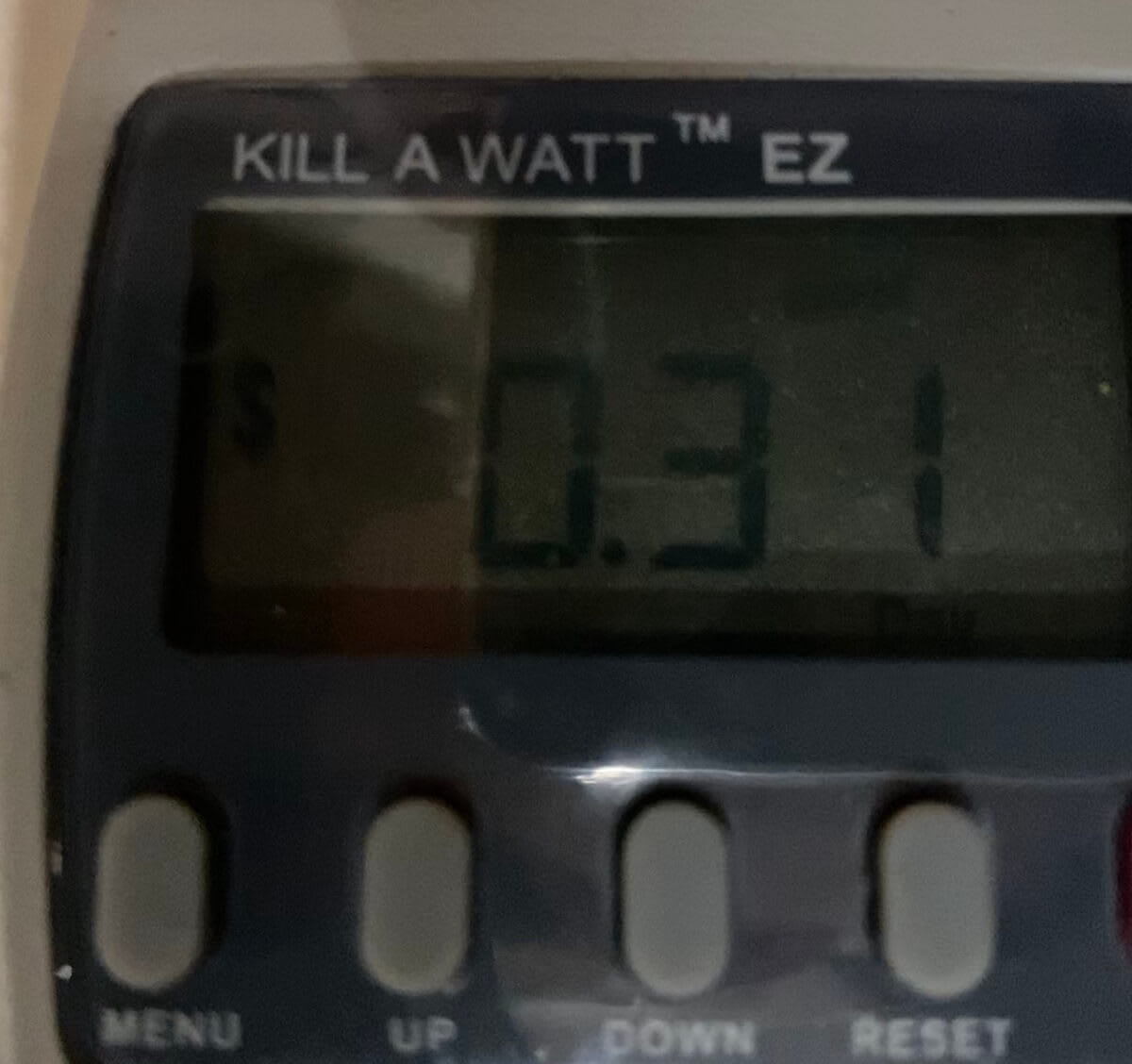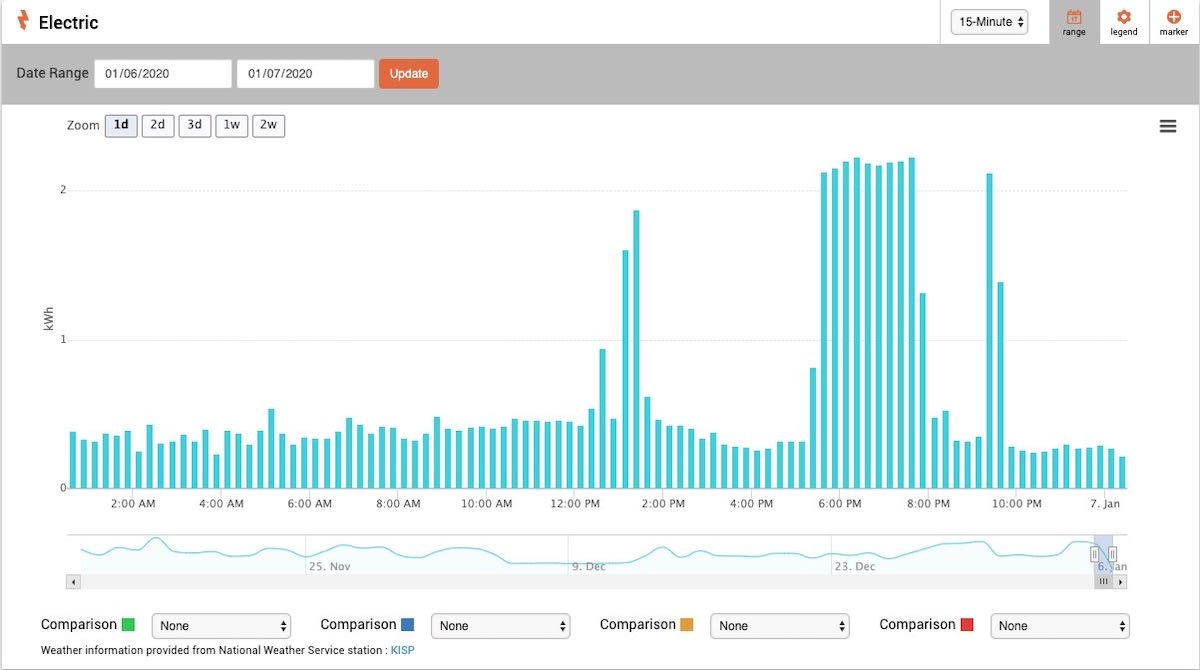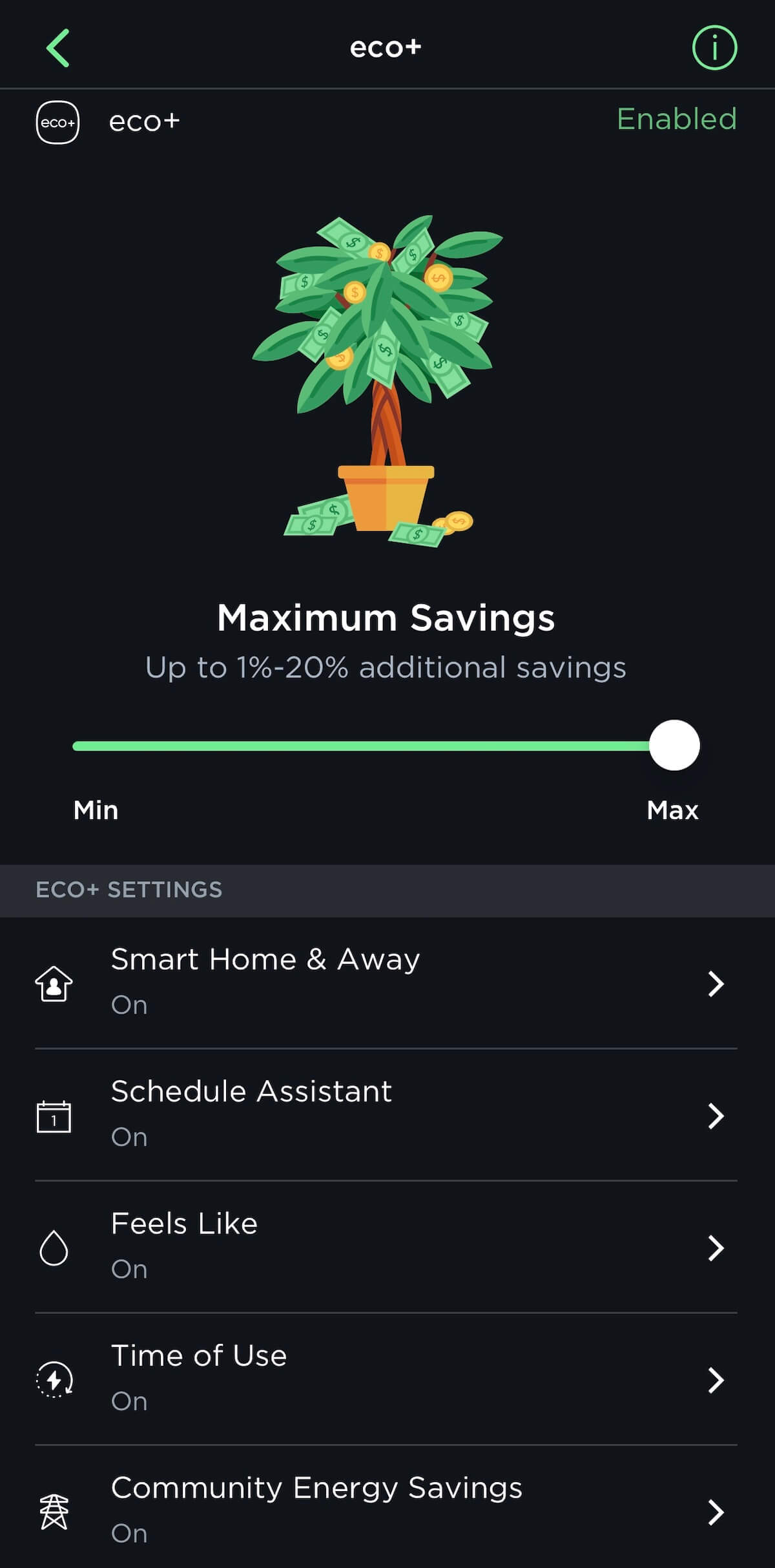I’ve spent a great deal of my life admiring nature and thinking of ways we can do to reduce our footprint. I’d like to think I’ve taken steps both physically and monetarily to do so.
The Dreaded Power Bill
Which is why one Wisconsin Winter day I opened my utility (gas and electric) bill and had a not so pleasant moment. Complete sticker shock at the $410 USD single month total, which was our highest bill yet. I almost immediately thought this can’t be right, only to get the power bill break down only to see some mistakes had been.
Power Bill Insights
I analyzed the electric bill by looking at the kWh break down. This was telling me a couple things:
The Telsa Model 3 was starting to charge every night at 10:00pm. This is exactly when time of use enters the cheapest rate (or so I thought)!
I was not entered into Three-Tier Time-of-Use program like I had previously thought. Time-of-Use (TOU) billing allows you to have cheaper or more expensive billing periods based on historic grid usage.
Time of use rates are a type of electricity rate used by some utilities for billing customers. Under a TOU rate, customers pay different prices per kilowatt hour (kWh) of electricity that they use, depending on when they use it. Pricing varies by time of day, and can also vary based on the day of the week (weekend or weekday) and the time of year (Aurora).
I thought I had enabled this eight months previously by entering into the time of day program website. However the opt requests must go straightly to the garbage, because it was never processed. It just took a call to the power company to get it enabled. I learned a valuable lesson to always follow up to ensure things get done!
Some power hourly usage spikes looked like they could be caused by something running on a schedule. I immediately started thinking about the thermostat comfort settings.
The max kWh usage excluding Tesla charging seemed like average use.
This lead me to reexamine what I was doing as well as look into products that might help me determine what is consuming electricity.
Measuring
I was talking to one of my awesome neighbors about how our bill had gone way up from the previous month. I was happy to know I wasn’t alone and there are tools that can help. I was lent a Kill A Watt Electric Monitor to help measure kWh usage by devices that are plugged in.
I had never seen one of these before and it blew my mind that this existed. It monitors the electricity usage of the device plugged into it and reports many facts like price (per hour, day, week, month, year) based on single use rate.
Advice: The longer you measure the more accurate your results will be!
This really helped me track down what my fridge, freezer, 3D Printer, smart device (Alexa, Gaming Consoles), and server rack were costing per month. It was eye opening to see the the Amazon Echo 3rd Gen speaker was costing me a few dollars per month to run (calculated using $0.10 per kWh). The real shocker was when I decided to measure only the Wemo mini smart plug with nothing connected was costing me $0.31/day.

I do want to remeasure this to verify as it does seem a bit excessive on the usage front.
I luckily already upgraded every single light bulb to the lowest wattage LED bulb while maintaining bright white light! If you haven’t done this, then I recommend to calculate light bulb costs per room and keep this in back of your mind. It will help you purchase efficient LED bulbs and think about how to optimize the power usage of each room.
Residential LEDs – especially ENERGY STAR rated products – use at least 75% less energy, and last 25 times longer, than incandescent lighting (energy.gov).
The one thing I haven’t figured out is how much energy is my hard wired smart devices costing me (e.g., smart switches)? I was betting that if I looked at the product details it would be unlikely to tell me how much it costs to operate! So was there already a monitoring solution that could help me?
Near Real Time Data From Power Company
Last year my utilities all upgraded to smart meters. These meters report usage data wirelessly as well as via Zigbee. I really like this as it’s a win for everyone! The utility companies don’t have to drive around, the environment is less polluted by internal combustion engines (ICE), and end users can see near real time usage.
I was discussing solutions with Ryan Hoffman, and he showed me his power companies near real time usage using these meters and I was soo jealous.

This was exactly what I needed so I called once again the power company as well reached out on twitter (squeaky mouse gets the cheese) and asked how to get Zigbee read-only access. I was basically told there was no Zigbee hardware support on any of their devices and they had already evaluated this. I was upset to say the least as I had already read the meters user manual and knew this was not true. After some frustration and explaining how they were incorrectly informed… I was eventually called back by a meter tech who had researched this exact scenario. Long story short, there are some limitations needed to be worked through to enable it for everyone and it’s still a ways out.
Energy Monitoring Device
When I learned that I can’t use the power companies near real time data, there had to be a way to get it from inside of the house. I started searching for solutions and came across a lot of solutions but not very many met my criteria:
- Let me see my usage in near real time (eventual consistency :D)
- Let me query the data so I can make informed decisions
- Low maintenance
- Easy to install
- Work with existing devices and software.
- Low power consumption of measuring device.
- [Optional, but not happy about it] work offline
There were only two devices I’ve found that match all or most of this criteria.
- The Aeotec Z-Wave Home Energy Meter uses Z-Wave to report usage to Home Assistant. I really like that it works completely offline and I have a friend that has had much success using this!
- The Sense uses out dated 2.4 GHz WIFI 3 to report usage to the cloud. You can then pull this data into Home Assistant. I don’t like that this requires an internet connection, but the pros are pretty unique. Sense can support detecting most devices (I’ve read it can have problems detecting LED devices) and can let you know when that device turns on or off. I like that it also supports Solar!
I’ve yet to purchase any solution yet, but I’m leaning towards the Aeotec. It is 1/3 the price of the Sense and it runs locally. I just hate giving up solar option and detecting devices. I will try and review the solution I pick in a future post.
Short Term Solutions
If your time is precious I would suggest starting in this order.
- Communicate with the whole house hold about current usage patterns and how to find a happy medium.
- Optimize your furnace schedules so more zones run at the same time and update the comfort settings to be warmer or colder depending on environment.
- If your usage (e.g., charging a car) can be scheduled, then opt into
Time-Of-Use based billing through your utility company.
 Also make sure to update your devices to optimize Time-Of-Use! I enrolled
all of my ecobee thermostats
into eco+.
Also make sure to update your devices to optimize Time-Of-Use! I enrolled
all of my ecobee thermostats
into eco+. - Measure your usage and find the quick ways to reduce energy. Turn off things you are not using (e.g., the coffee maker).
- Write automation routines or turn on settings that turns off bulbs when there is no motion/occupancy. Remember smart bulbs always require power.
- Upgrade to LED bulbs.
- Seal windows for winter and look into getting more insulation installed.
Long Term Solutions
I’m starting down this path today and here are the steps I’m currently planning on taking.
- Better measuring of devices with a smart home energy metering solution.
- Analyzing device power and user usage data and writing smart automations
that reduce power usage without restricting limiting comfort. Some examples
include:
- Run the pond air pump at off peak times or when people are observing the pond. I think this can be done with the Aeotec 40 amp smart switch
- Only turn on half of the room lights during high peak time (e.g., kitchen sink, a lamp).
- Advanced furnace zone scheduling learning off calendars and history.
- Better climate management by opening blinds when the sun is shining in on a cold day, but leaving it closed when it’s hot out.
- Buying lower energy smart devices. I’m starting to analyze everything I buy to ensure they are as efficient as possible. I’m currently running my smart home on an Atomic Pi which runs Home Assistant and much more using only 4-15 watts. I’m planning on upgrading it to a low powered AMD Ryzen 4000 machine or a 11th generation Intel NUC (15 watt TPD). I have been considering the 10th generation Intel NUC as well if I need to upgrade before the 11th generation devices arrive.
- I want to install either Solar Panels and Batteries to help offset my power usage and ensure it’s coming from a green source. I’ve been evaluating replacing my aging garage roof with a Solar Roof and a Power wall as users have indicated huge savings when using Time-Of-Use Billing! Here is my Tesla referral if you are thinking of doing this too!
Conclusion
I hope I gave you ways to measure and reduce consumption! Do everything you can to reduce and reuse in your life, leaving it better for future generations!

Twitter
Facebook
Reddit
LinkedIn
Email